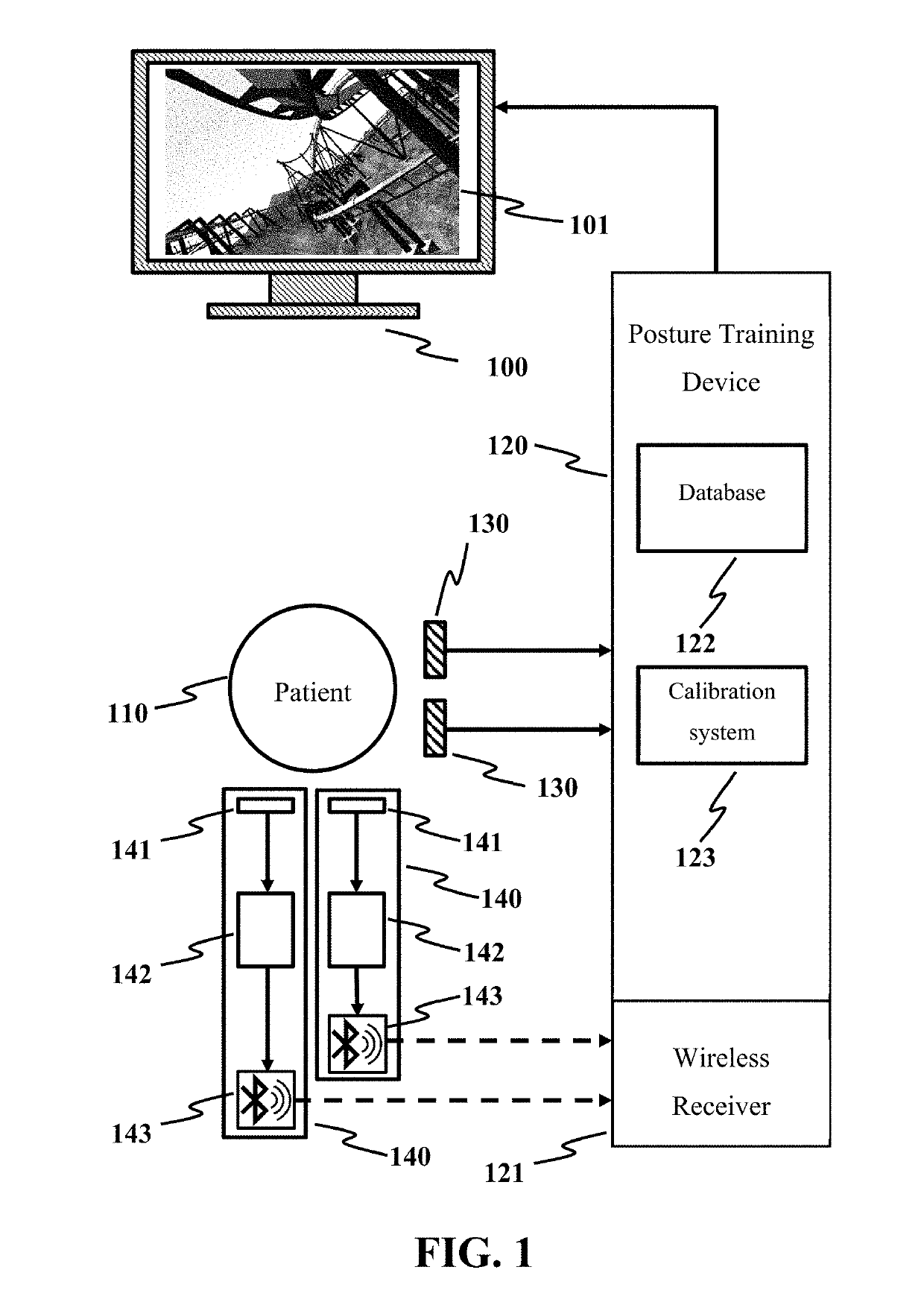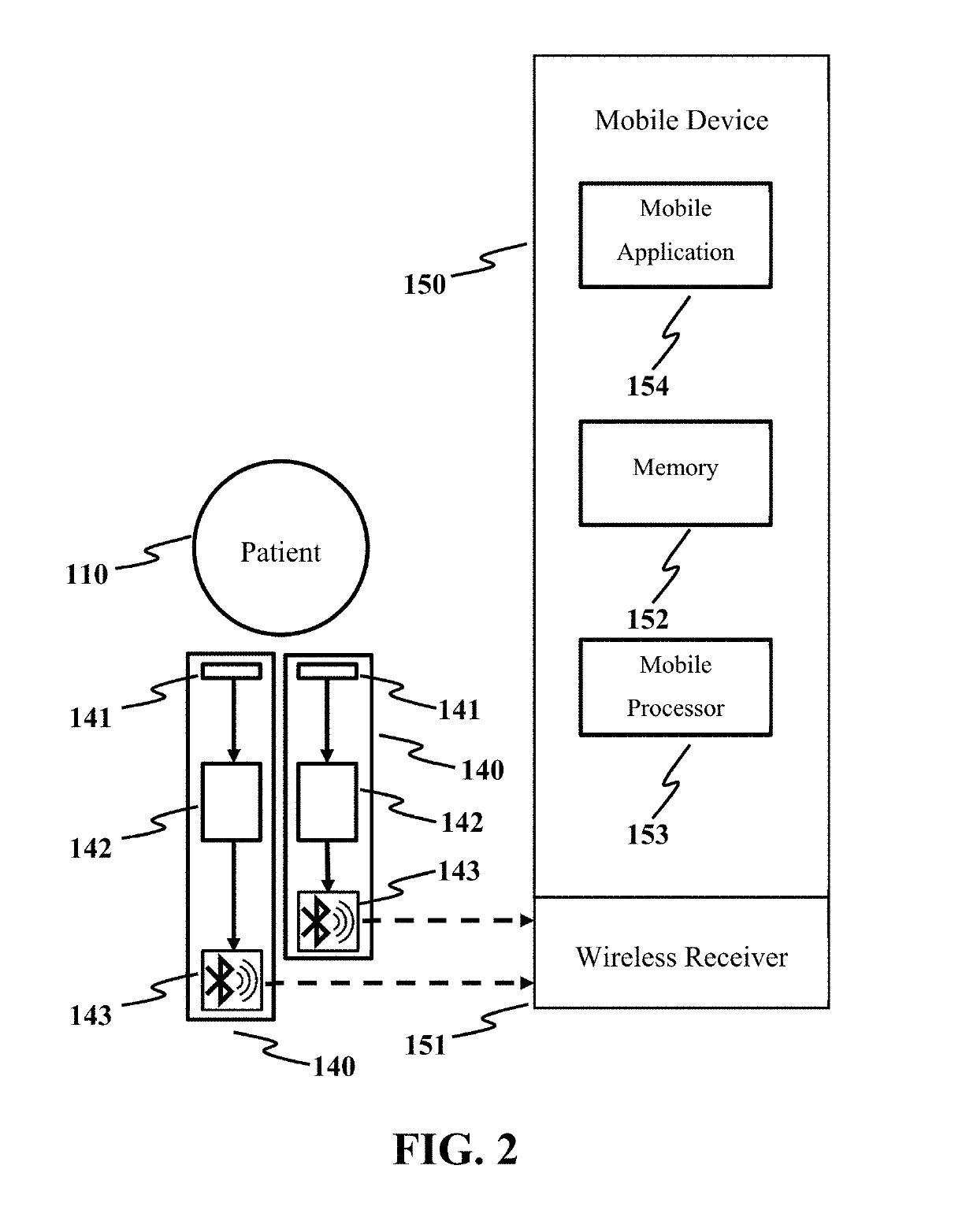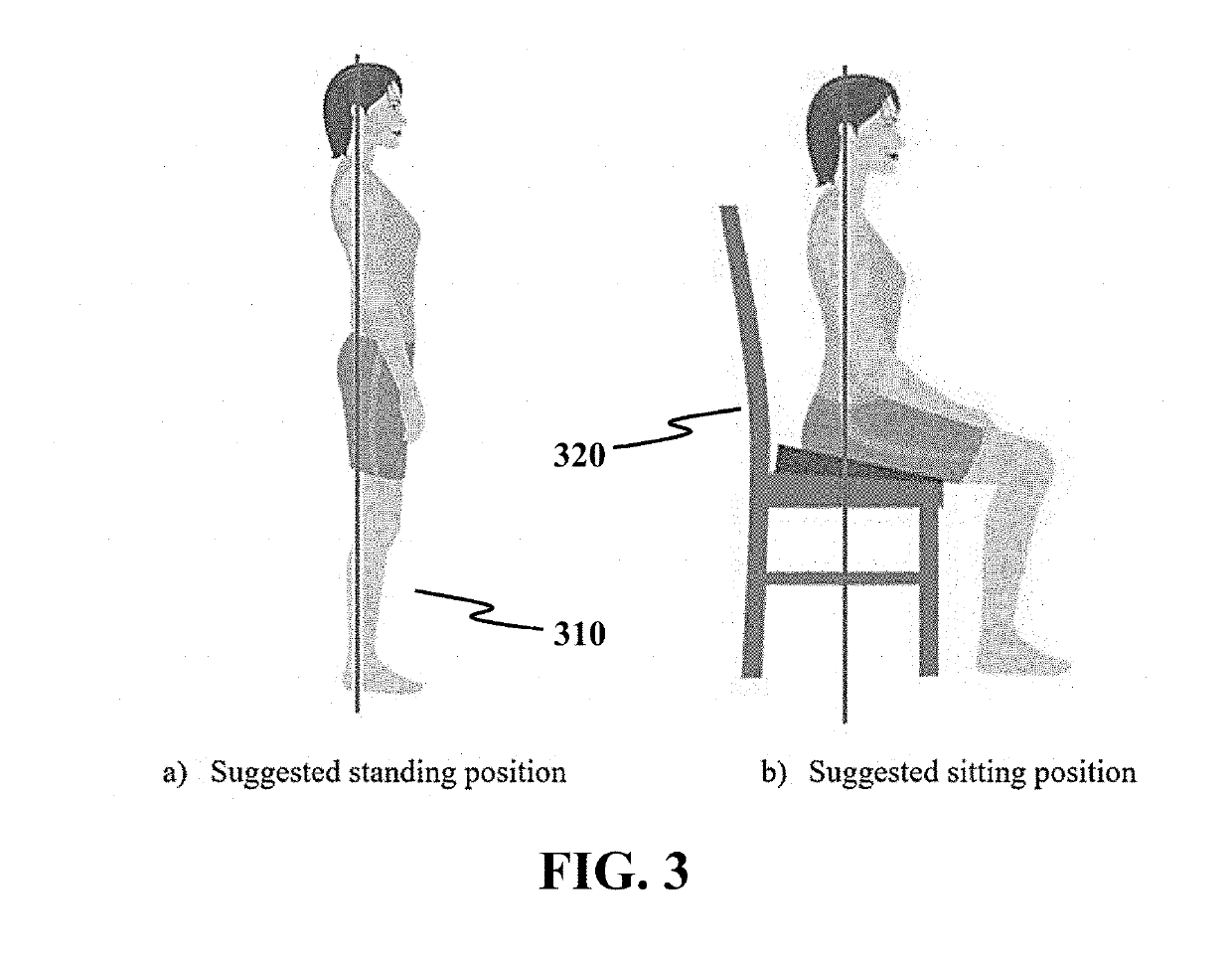Biofeedback System with Body Mapping Clothing for Patients with Adolescent Idiopathic Scoliosis
- Summary
- Abstract
- Description
- Claims
- Application Information
AI Technical Summary
Benefits of technology
Problems solved by technology
Method used
Image
Examples
Embodiment Construction
[0037]The present disclosure relates generally to an adolescent idiopathic scoliosis (AIS) treatment. More specifically, but without limitation, the present disclosure relates to a sensor-based biofeedback system using a body mapping clothing for monitoring patient-related signals of a patient with AIS and thereby enabling the patient to obtain a dynamic, personalized biofeedback based on the patient-related signals, wherein the biofeedback is generated from a processor, a computer system, or a computing server, calibrated with surface electromyographic (sEMG) signals, and analyzed by the processor, the computer system, or the computing server for providing progressive and tailored posture training to patient with AIS.
[0038]The following detailed description, the system and the corresponding treatment methods are merely exemplary in nature and are not intended to limit the disclosure or its application and / or uses. It should be appreciated that a vast number of variations exist. The...
PUM
 Login to View More
Login to View More Abstract
Description
Claims
Application Information
 Login to View More
Login to View More - R&D
- Intellectual Property
- Life Sciences
- Materials
- Tech Scout
- Unparalleled Data Quality
- Higher Quality Content
- 60% Fewer Hallucinations
Browse by: Latest US Patents, China's latest patents, Technical Efficacy Thesaurus, Application Domain, Technology Topic, Popular Technical Reports.
© 2025 PatSnap. All rights reserved.Legal|Privacy policy|Modern Slavery Act Transparency Statement|Sitemap|About US| Contact US: help@patsnap.com



